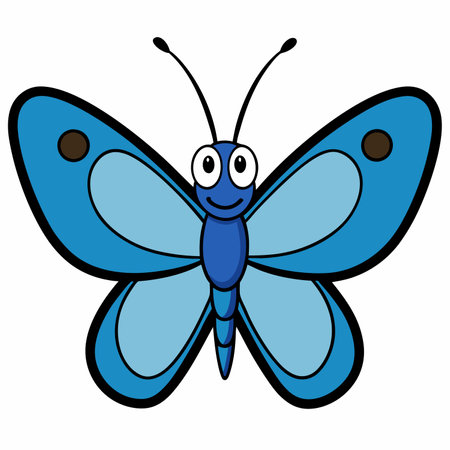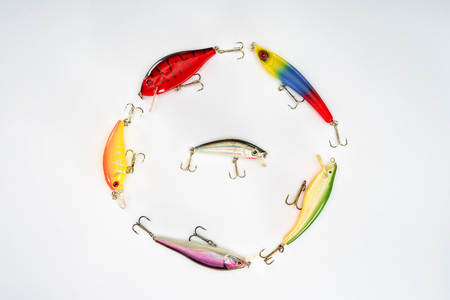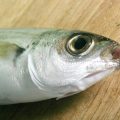Introduction to Fly Fishing Flies
Fly fishing is more than just a pastime in the United States—it’s a way of connecting with nature and embracing the outdoors, from the mountain streams of Colorado to the rolling rivers of Montana. At the heart of this beloved tradition are artificial flies, tiny hand-tied creations designed to mimic the bugs and baitfish that trout and other fish love to eat. Understanding the different types of flies—streamers, dry flies, and nymphs—is key to unlocking a successful day on the water. Whether you’re casting into your local creek or planning an adventure out West, knowing how and when to use each fly not only ups your chances of landing a big one, but also deepens your appreciation for the art and science behind fly fishing. So, before you tie that first knot, let’s explore what makes these flies so essential to American fly fishing culture.
2. Streamers: Imitating Baitfish and Aquatic Creatures
When fly anglers in the U.S. talk about chasing big fish, streamers always come up in conversation. Unlike dry flies or nymphs, streamers are designed to mimic larger prey—think baitfish, leeches, crayfish, and even small frogs. Their lifelike movement in the water triggers predatory instincts in trout, bass, and other gamefish across American rivers and lakes.
What Are Streamer Flies?
Streamers are typically larger than most other fly types and are tied with materials like marabou, rabbit strips, and flashy synthetics to create movement and vibration. The idea is to catch a fish’s eye by imitating the swimming action of wounded or fleeing aquatic creatures. Popular patterns include the Woolly Bugger, Muddler Minnow, and Clouser Minnow.
How Streamers Are Fished
Fishing streamers is active—think “cast and retrieve” rather than simply drifting along with the current. Anglers often strip the line back in quick or erratic bursts to make their streamer dart and pulse through the water. This technique is especially effective after rainstorms when rivers run high and murky, as big predators use these conditions to ambush prey.
Why Streamers Are a Go-To for Big Fish
Across America, targeting trophy trout in states like Montana or pursuing largemouth bass in Southern lakes often means tying on a streamer. Large fish are opportunistic—they won’t pass up an easy meal that delivers lots of calories in one bite. Streamers offer just that opportunity, which explains their popularity among seasoned anglers from the Rockies to Appalachia.
Common Streamer Patterns & When to Use Them
| Pattern Name | Best Use Scenario | Main Target Species |
|---|---|---|
| Woolly Bugger | All-around; clear or murky water | Trout, Bass, Panfish |
| Muddler Minnow | Mimics sculpins; shallow riffles | Trout, Smallmouth Bass |
| Clouser Minnow | Lakes or rivers; fast current | Bass, Pike, Walleye |
| Zonker | Low light conditions; deep runs | Brown Trout, Steelhead |
If you’re looking for heart-pounding strikes and memorable catches during your next fly fishing adventure, don’t overlook streamers. They’re an essential part of any American angler’s fly box—whether you’re wading a Rocky Mountain river or casting along a Midwestern lake shore.

3. Dry Flies: Matching the Hatch
When it comes to fly fishing in America, few experiences compare to watching a trout rise to sip a perfectly presented dry fly from the water’s surface. Dry flies are designed to imitate adult insects—mayflies, caddisflies, stoneflies—that land or emerge on top of the water. The beauty of fishing with dries is that it’s visual, exciting, and deeply connected to what’s happening in nature at any given moment.
The concept of “matching the hatch” is central to dry fly fishing. This means observing which insects are hatching and choosing a fly pattern that closely resembles them in size, shape, and color. When you get it right, even the most selective trout can’t resist. In classic American waters—from Montana’s spring creeks to the Catskills—the right dry fly can turn an ordinary day into an unforgettable one.
Classic American Dry Fly Patterns
Some legendary patterns have earned their place in American fly boxes for decades. The Adams, with its gray body and grizzly hackle, is a go-to for matching many mayfly hatches. The Elk Hair Caddis floats high and imitates fluttering adult caddisflies—a favorite for fast western rivers. And when stoneflies are out, the bushy Stimulator grabs attention on rough currents. These time-tested patterns are reliable choices across the country.
Why Dry Flies Matter
Fishing dries isn’t just about catching fish—it’s about reading water, studying bugs, and enjoying that magical connection with wild trout. There’s something special about seeing your fly disappear in a splashy rise or gentle sip, knowing you’ve cracked nature’s code for the day. Whether you’re casting tiny Blue-Winged Olives during a spring drizzle or drifting big Hoppers on a summer afternoon, dry flies bring a sense of joy and anticipation every time you hit the river.
4. Nymphs: Subsurface Success
If you’ve spent any time chatting with seasoned fly anglers on the riverbank, you’ve probably heard them say, “Most of a trout’s diet comes from below the surface.” That’s where nymphs shine. Unlike flashy streamers or buoyant dry flies, nymphs imitate the immature stages of aquatic insects—the ones drifting or crawling along the riverbed. Because these bugs are so abundant and easy targets for hungry fish, nymphing is a tried-and-true way to land more trout, especially when surface action slows down.
What Are Nymph Flies?
Nymph flies are designed to resemble insects like mayflies, caddisflies, stoneflies, and midges in their juvenile underwater forms. These patterns usually sport drab colors—olive, brown, black—to blend in with rocks and debris. They often have weighted beads or lead wire bodies to help them sink quickly through the current.
Why Fish Below the Surface?
Trout spend most of their time feeding beneath the water’s surface because that’s where the buffet is. As aquatic insects grow and molt, they become easy pickings for fish waiting in deeper pools or riffles. By fishing nymphs near the bottom, you’re putting your fly right in the strike zone.
Matching Local Insects: Choosing & Using Nymphs
| Local Bug | Nymph Pattern | Best Season | Water Type |
|---|---|---|---|
| Mayfly Nymph | Pheasant Tail | Spring-Fall | Riffles & Pools |
| Caddis Larva | Green Weenie | Late Spring-Summer | Runs & Under Rocks |
| Midge Larva | Zebra Midge | Year-Round | Slow Pools |
| Stonefly Nymph | Pat’s Rubber Legs | Early Spring | Fast Water & Riffles |
Tactics for Nymphing:
- Use an Indicator: This small bobber helps detect subtle strikes when your fly is drifting below.
- Add Weight: Pinch-on split shot or beadhead flies help your nymph reach the correct depth quickly.
- Mend Your Line: Adjust your drift so your fly moves naturally with the current—just like a real insect would.
- Adjust Often: Change flies or weights if you’re not getting bites; trout can be picky depending on conditions.
Nymphing might not be as showy as dry fly fishing, but it’s one of the most consistent ways to hook up with wary American trout. When in doubt, go subsurface and let your nymph do the talking.
5. Choosing the Right Fly for Your Local Waters
Picking the right fly is a bit like picking the right tool for a job—it all depends on what’s in your backyard and how Mother Nature is behaving. Across the U.S., from the clear, cold streams of Montana to the warm, slow rivers of the Southeast, fish respond to different bugs, baitfish, and local hatches. That means your fly box should reflect not just your style but also your home waters.
Match the Hatch: Knowing Your Fish and Their Food
The golden rule of fly selection is “match the hatch.” This means observing what insects or small fish are present and active where you’re fishing. For example, trout in Colorado’s high-altitude creeks might rise eagerly for tiny blue-winged olive dry flies in spring, while bass lurking in Southern lakes often chase big, flashy streamers that mimic shad or minnows. Learning about regional aquatic life—like stoneflies in the West or caddis hatches in New England—will give you an edge when choosing between nymphs, dries, or streamers.
Consider Local Conditions
Weather and water conditions matter just as much as location. After rain, rivers can run high and murky, calling for larger, brighter flies like woolly buggers or articulated streamers. On clear summer days with low water, subtle nymphs or delicate dry flies are more likely to fool wary fish. Even time of day counts: try emergent nymphs early morning and switch to dry flies during midday hatches.
Tap Into Community Wisdom
One of the most rewarding parts of American fly fishing culture is the sense of community. Local fly shops are goldmines for up-to-date advice on which patterns are working and why. These folks spend their days on nearby waters and love talking shop. Don’t be shy—ask about hot flies and get tips tailored to your destination. Joining a local angling club or chatting with other anglers at the riverbank often leads to learning tricks you won’t find online.
In short, adapting your fly selection to local species and changing conditions is key to success—and connecting with experienced locals will help you tune into your home waters’ rhythms. It’s all part of building a deeper relationship with both nature and fellow anglers.
6. Tips for Fly Presentation and Success
Mastering the Natural Drift: The Key to Fly Fishing
When it comes to fly fishing, presenting your fly as naturally as possible is the ticket to fooling even the most selective trout. Whether you’re drifting a dry fly along a riffle, swinging a streamer through a deep run, or nymphing in pocket water, your fly needs to move just like the real thing would in that current. Let’s break down some practical American know-how for each style so you can land more fish and enjoy those river moments even more.
Streamers: Imitate the Chase
For streamers, think about how a baitfish or crayfish might dart away from predators. Cast quartering downstream, let your streamer sink, then retrieve with short, erratic strips—mixing up speed can trigger aggressive strikes from big browns and rainbows lurking under cutbanks or behind boulders. If the water is stained after a rain, don’t be afraid to use larger, flashier patterns; just keep that presentation lively!
Dry Flies: Float Like a Feather
With dries, success depends on getting a drag-free drift. Mend your line upstream right after your cast lands so the fly floats gently with the current. Watch for subtle rises—sometimes all you’ll see is a dimple or swirl. Use light tippet (5X or 6X) for delicate presentations, especially when fishing pressured rivers like Montana’s Madison or Colorado’s South Platte. Don’t skimp on floatant—keep those hackles high and dry!
Nymphs: Down Where the Fish Are
Nymphing is all about depth and subtlety. Adjust your strike indicator so your flies tick just above the bottom—trout do most of their feeding down low! A split shot 8–12 inches above your top nymph helps get you there quickly. In slower pools, make longer drifts and watch your indicator closely; any pause or twitch could mean a take. In faster runs or pocket water, shorter drifts and high-sticking techniques help maintain contact with your flies.
Reading Water: Where Trout Hold
Understanding river structure is crucial. Look for seams where fast and slow currents meet, behind rocks, under overhanging branches, and at the tailouts of pools—these are classic feeding zones in American trout streams. Approach quietly and avoid casting shadows over likely holding spots; stealth matters as much as presentation!
Final Thoughts: Practice Makes Perfect
No matter what fly you’re using, practice casting from different angles and distances until you can put your fly right where you want it. Watch local anglers if you’re new to an area—they often know tricks tailored to that stretch of water. With patience and observation, youll find yourself connecting not just with fish but with the rhythm of the river itself—a true American fly fishing experience.


